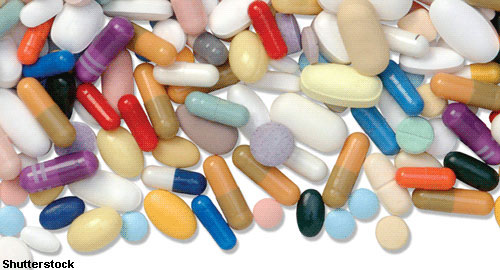 In May, the U.S. Food and Drug Administration (FDA) approved denosumab (Prolia) for treating glucocorticoid-induced osteoporosis (GIOP) in adult men and women with a high risk of fracture.1 High fracture risk is defined as a history of osteoporotic fracture, multiple risk factors for fracture or patients who have failed or are intolerant to other available osteoporosis therapy. This FDA approval is based on data that showed adult patients receiving glucocorticoids who also received denosumab had greater increases in bone mineral density (BMD) than patients who received risedronate as an active comparator.2
In May, the U.S. Food and Drug Administration (FDA) approved denosumab (Prolia) for treating glucocorticoid-induced osteoporosis (GIOP) in adult men and women with a high risk of fracture.1 High fracture risk is defined as a history of osteoporotic fracture, multiple risk factors for fracture or patients who have failed or are intolerant to other available osteoporosis therapy. This FDA approval is based on data that showed adult patients receiving glucocorticoids who also received denosumab had greater increases in bone mineral density (BMD) than patients who received risedronate as an active comparator.2
The study was a phase 3, 12-month primary analysis of a 24-month randomized, double-blind, double-dummy, active-controlled study (N=795). The efficacy and safety of 60 mg subcutaneous denosumab given every six months was compared with 5 mg oral risedronate given once daily. Patients also received at least 7.5 mg/day of oral prednisone (or equivalent). The study included two patient groups. Patients in the glucocorticoid-initiating group were receiving glucocorticoid treatment for less than three months prior to the study and were planning to receive glucocorticoids for at least six months. Patients in the glucocorticoid-continuing group were receiving glucocorticoids for a minimum of three months prior to the study and were planning to receive glucocorticoids for at least six months.
In the glucocorticoid-continuing group, denosumab treatment showed a significantly greater lumbar spine BMD increase than the risedronate-treated patients at Year 1 (3.8% vs. 0.8%, respectively). The treatment difference was 2.9% (P<0.001). Additionally, in the glucocorticoid-initiating group, denosumab treatment showed a significantly greater lumbar spine BMD increase vs. risedronate-treated patients at Year 1 (4.4% vs. 2.3%, respectively). The treatment difference was 2.2% (P<0.001). The effects on the lumbar spine BMD were consistent without regard to patient gender, race, geographic region, menopausal status, baseline age, lumbar spine BMD T score and/or glucocorticoid dose within the groups.
During the study, no new safety signals were identified. The most common adverse reactions were back pain, bronchitis, headache and hypertension. Atypical femoral fracture was reported in one denosumab-treated patient. No cases of osteonecrosis of the jaw were reported. Serious infections were reported in 3.9% (n=15) of risedronate-treated patients and 4.3% (n= 17) of denosumab-treated patients. Dermal and epidermal dermal adverse events, such as dermatitis, eczema and rashes, were reported in 4.2% (n=16) of risedronate-treated patients and 3.8% (n=15) of denosumab-treated patients.
Michele B. Kaufman, PharmD, BCGP, is a freelance medical writer based in New York City and a pharmacist at New York Presbyterian Lower Manhattan Hospital.
References
- Amgen Inc. News release: FDA approves Prolia (denosumab) for glucocorticoid-induced osteoporosis. 2018 May 15.
- Saag KG, Wagman RB, Geusens P, et al. Denosumab versus risedronate in glucocorticoid-induced osteoporosis: a multicentre, randomised, double-blind, active-controlled, double-dummy, non-inferiority study. Lancet Diabetes Endocrinol. 2018 Apr 6. pii: S2213-8587(18)30075-5. [Epub ahead of print]

